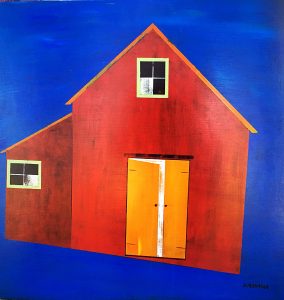By Arthur H. Gunther III
Thecolumnrule.com
I live in Rockland County, N.Y., a semi-rural land when I was young but now a New York City suburb that is graying with older housing stock, demands for more urban-like density, rising infrastructure costs and other threats to the quality of life. It is the typical U.S. suburb, sometimes a worrisome place with a future uncertain in an economy that may never again see a vibrant middle class. The middle class thirsted for the burbs, kept it going but today cannot afford it. Suggestions follow for Rockland as it faces the years ahead; perhaps they are applicable elsewhere.
Rockland municipalities must act now on joint planning issues if taxes, diversity and quality of life are to be best managed in the fast graying of suburbia. Some of the county’s post-World War II housing is among the nation’s oldest, and there should be common thought as to how to keep development stable as well as to renew it.
Towns and villages should come together, with the county leading, to devise shared standards for future growth and regrowth. What happens in one town or village affects the others, especially in infrastructure such as water supply and sewers, density, drainage, traffic and the county tax load.
Rockland’s cost of living is well above the national average, and its budget, which zoomed from about $489 million in 2001 to $674 million in 2017, is not sustainable. Those costs are directly attributable to population changes, including aging out and poorly planned density growth, as well as unfunded state mandates that should be protested jointly by all municipalities.
Economic and quality-of-life pressures will continue to push residents from the county, some taking with them a sense of history and dedicated community involvement that may not necessarily be replaced. The worry is that we will urbanize in anonymity, with 60-70-year-old housing not renewed, with some areas grossly neglected as the cost of home ownership rises.
Municipalities must prepare now to obtain the best outlook. Towns and villages, with the county in the lead, should form the “Rockland Outlook Consortium” to:
* Set common zoning standards for housing density, recognizing that much of the county developed after World War II has 1/3-acre or 1/4-acre housing plots with 1,600-1,800 square-foot homes. Redevelopment at greater density will invite a population increase that cannot be afforded by municipalities and school districts. The architecture will also overwhelm and green space will dwindle. There must be a planning balance if suburbia is to survive and redevelop with quality of living.
* Require sufficient drainage ponds and storm sewering with a look at what happens downstream. For example, irresponsible growth in Ramapo along the Pascack Brook affects homes in Orangetown, even in New Jersey. Residents elsewhere should not suffer flooding and remediation costs because Ramapo has licensed overgrowth. There must be a better look at the effect of development or regrowth in one municipality versus the quality of life in other communities.
* Seek balance in growth/regrowth. From its beginning, Rockland has been diverse, and that enriches our lives and our history. There must be housing for all incomes, but much better planned and in a mix. We must guard against decaying neighborhoods, leaning on unscrupulous landlords who take single-family homes and illegally convert them to boarding houses.
* Work with the Rockland fire coordinator and volunteer fire departments to require landlord-paid, six-month re-inspections of all multi-tenant housing for housing and fire code violations. Building inspectors must be much more pro-active, and the courts must jail repeat slumlords. Property appearance codes must be better written and enforced.
* Discourage suburban shopping, rezoning areas to prevent such development. Instead, we must renew village downtowns and hamlet centers, with sufficient parking and walkable areas. Existing strip-shopping owners should be made to clean up their acts, with litter, poor paving and neglected storefronts rehabilitated.
* School districts should work even more fervently to support one another so that we do not have the imbalance that now exists — East Ramapo students without enough teachers and courses while just next door the Clarkstown School District offers relative educational riches. We should all be ashamed of such inequity in Rockland. Albany aid formulas, income-based school taxation and mandate relief must be the continuing agenda, and the better-off Rockland districts must help their brothers in the fight.
Rockland County will continue into this century, but with what future? Are we to face unsupportable deficits? Stressed schools and disenfranchised children? Run-down, unsafe housing? An imbalance of housing density that favors some and shuts out others? Perhaps a “Rockland Outlook Consortium” that agrees on common planning standards and even shames wayward municipalities can begin to steer our troubled ship off the rocks.
The writer is a retired newspaperman who lives in Blauvelt, N.Y. Contact him at ahgunther@yahoo.com.

